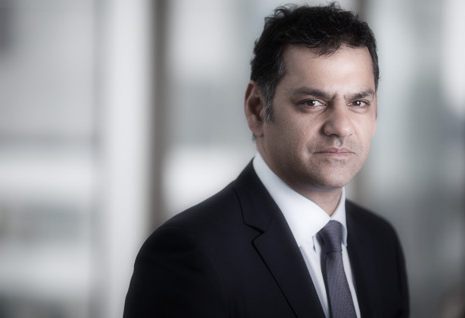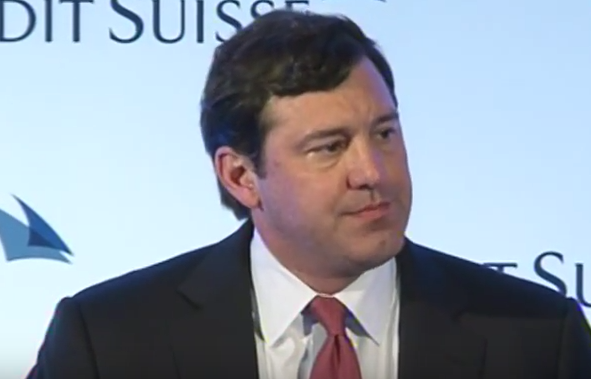Why Are Markets in Denial About Inflation?
| For Fórmate a Fondo | 0 Comentarios

As the US labor market continues to improve, investors are still waiting for signs that inflation will pick up. And with US consumer prices posting only a slight uptick in March, the Federal Reserve continues to assure markets that it will “proceed cautiously” in normalizing its policy rate.
Amit Agrawal, senior portfolio manager of developed markets investment grade credit at PineBridge Investments, discusses what’s going on with the Fed’s hawk-dove game and how investors can position portfolios for rising inflation.
Inflation has been benign for years in the US. Why are markets suddenly talking about it again?
Inflation has become a hot topic over the past two to three months because core inflation – which excludes the volatile food and energy components – has risen over 2% for the first time in four years. What many people haven’t noticed is that core inflation has been brewing for a while; 14 months ago it was at 1.6%. If you strip out goods, inflation has been trending over 3% over the past few months.
Why has the core trend flown under the radar?
Because low oil prices have dragged down the headline inflation rate, presenting a mixed picture.
The interesting thing is that despite these moves, the market is still sanguine about inflation. Investors are not convinced that it’s real, and neither is the Federal Reserve. In fact, the Fed is forecasting lower inflation for 2016 than we’re seeing right now. But if you look at past 50 years, US inflation has averaged around 4%; with core inflation at 2% currently, the risk of rising inflation is certainly there. For now, oil has stabilized, the Fed’s messaging is more dovish, and the dollar is trending sideways. These are all positive tailwinds for inflation in the near term.
Why are so many market participants unconvinced? And when do you think they’ll embrace the rising inflation trend?
The reason has to do with wages. The labor market has been improving for five or six years, while wages have been stuck around 2% over that time. Only over the past six months have we seen wages tick up around 2%-3% year over year. In past recoveries, wages have risen 3%-4%. Historically, when labor market slack disappears, inflation tends to show up in higher wages.
As far as when investors will come around, right now, we’re in what I call a “show-me” market. Inflation will have to run higher to convince people it has really arrived.
Several disinflationary trends have made people complacent about inflation: technological advances, demographics, the end of the commodity “supercycle,” and the China slowdown. These do seem like fair reasons for markets to expect inflation to remain low for a long time. (Although I’d argue that demographics may actually be inflationary as baby boomers enter retirement and require more in terms of health care and other services.) In fact, a recent survey by OppenheimerFunds found that, among the top 10 concerns among institutional investors for the next decade, inflation is nowhere to be found.
Unemployment is at 4.9% right now. As slack reduces further, wages will pick up on a broad-based measure. Indeed, the Fed recently reported an increase in wages in nearly all regions of the country in the “beige book,” its survey of economic conditions.
How does the US dollar fit in?
Fed research has shown some impact of the dollar on core inflation, but not a significant one. It’s more about sentiment; inflation expectations can be self-fulfilling.
The impact of the dollar is stronger on headline inflation through oil prices and lower import prices from China. This is why the Fed has been more dovish in recent commentary; the Fed is undermining the dollar because it doesn’t want the dollar to strengthen. (This “ultra-gradualism” is one of the Fed’s unspoken objectives.) By doing that, the Fed will have more conviction in its inflation and growth outlook – growth because of healthy exports, and inflation because it will help keep oil prices from deteriorating further.
What is your inflation forecast?
We expect core inflation to remain in the 2%-2.5% range over the next couple of years. I don’t expect to see a major pickup, but if wage inflation continues to rise, we expect core inflation could grow as high as 3% over that period.
The important thing is that the market is pricing in an average of 1% core inflation over the next five years. That’s a low bar, and it means inflation assets are very attractive; mispricing means opportunity.
Can you describe the opportunity set in inflation assets?
The opportunity set runs the gamut: Treasury Inflation-Protected Securities (TIPS), overseas markets, European inflation-linked bonds, commodity bonds, gold, real estate, and real estate investment trusts (REITs).
In the US, 30-year Treasury bond yields are about 2.5%, while 30-year TIPS are trading around 0.8%. TIPS are a much better investment than nominal Treasuries from a risk/reward perspective. The 30-year TIPS breakeven rate, which is the inflation component in the TIPS market, currently is below 1.8%. In the last 17 years, we have seen only four instances where TIPS traded below 1.8%.
The opportunity is even more robust in Europe, where the market is pricing in only 0.5% inflation over the next five years – much lower than in the US. Europe is in the midst of a huge push from the European Central Bank to create inflation through quantitative easing (QE). We think they will be successful in raising inflation much more than in the US. The market is way too pessimistic in Europe.
An indirect way to get exposure to the inflation opportunity is commodity bonds associated with energy and metals and mining companies. Many investors are shying away from these due to the broad slide in commodities prices. What they may not realize is that a lot of bonds from strong companies are trading at yields between 5% and 9%. These are companies we believe will survive the industry downturn. So while many investors have given up on commodities because of high volatility, we think select commodities bonds offer lower volatility with attractive upside.
Gold is a particularly interesting investment because it’s not only a commodity but a currency. With the Fed and the G3 undermining their currencies, many investors are turning to gold because it’s the only currency that governments don’t control. Gold was the best performing asset class in first quarter of this year; we expect prices from here will be range-bound, possibly moving up if we see a stronger rise in inflation or if central banks continue to undermine their currencies.
Real estate is another way to gain exposure to inflation. We think there is still some value left in REITs if you believe the US housing market will continue to recover. A big component of inflation in the US is shelter, which includes buying and renting. Home prices are growing at an annual rate of 3%-3.5%, and we expect this momentum to continue. The US has also seen a shift toward more renting, especially in metro areas, with an annual growth rate of 3%-5%.
Finally, investors can also buy direct exposure to real estate, though it’s important to realize that, unlike the other opportunities I’ve discussed, real estate is an illiquid investment.
How do you recommend investors position their portfolios for rising inflation?
If you expect inflation to rear its ugly head in the next couple years, and you own a high-quality portfolio with nominal Treasury bonds, you may want to consider selling those Treasuries in exchange for TIPS. Reallocating this way would allow you to gain exposure to inflation while maintaining the same credit quality.
We think gold is a good asset to own as part of a larger portfolio, not only for inflation down the road but as a safe haven as global central banks cut rates to negative. Equities and REITs are also good hedges against rising inflation.
Overall, you don’t need to make wholesale changes to your portfolios; we would recommend allocating about 10%-15% of a portfolio to instruments that are linked directly or indirectly to inflation.
This information is for educational purposes only and is not intended to serve as investment advice. This is not an offer to sell or solicitation of an offer to purchase any investment product or security. Any opinions provided should not be relied upon for investment decisions. Any opinions, projections, forecasts and forward-looking statements are speculative in nature; valid only as of the date hereof and are subject to change. PineBridge Investments is not soliciting or recommending any action based on this information.









